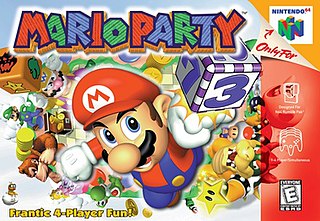
Mario Party is a 1998 party video game developed by Hudson Soft and published by Nintendo for the Nintendo 64. The game was targeted at a young audience. Mario creator Shigeru Miyamoto served as development supervisor. It received mostly positive critical reviews for its multiplayer mode, concept, and music; disapproval of its slow pacing; and mixed reviews of its graphics. It is the first installment in the Mario Party series and was followed by Mario Party 2 in 1999. The game received its first official re-release on the Nintendo Switch Online + Expansion Pack in 2022. Content from this game was remastered as part of Mario Party: The Top 100 for the Nintendo 3DS, Mario Party Superstars and the upcoming Super Mario Party Jamboree for the Nintendo Switch.

Mario Party 4 is a 2002 party video game developed by Hudson Soft and published by Nintendo for the GameCube. The game is the fourth installment in the Mario Party series and is the first game in the series to be released for the GameCube. Like the previous games in the series, it features eight playable characters: Mario, Luigi, Princess Peach, Yoshi, Wario, Donkey Kong, Princess Daisy, and Waluigi from the Mario franchise, who can be directed as characters on six themed game boards. The objective is to earn as many stars as possible, which are obtained by purchase from a single predefined space on the game board. Each character's movement is determined by a roll of a die, with a roll from each player forming a single turn. Each turn is followed by a minigame in which characters compete for coins they can use to purchase items and stars.

Donald Duck: Goin' Quackers is a platform video game developed and published by Ubi Soft for various consoles and Windows-based personal computers. A version with the same title was first released for the Game Boy Color, as well as on Game Boy Advance, the latter being given the title Donald Duck Advance.

Mario Party is a party video game series featuring characters from the Mario franchise in which up to four local players or computer-controlled characters compete in a board game interspersed with minigames. The games are currently developed by NDcube and published by Nintendo, being previously developed by Hudson Soft. The series is known for its party game elements, including the often unpredictable multiplayer modes that allow play with up to four, and sometimes eight, human players or CPUs.
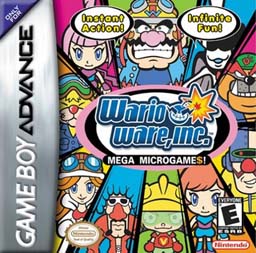
WarioWare, Inc.: Mega Microgames!,, known as WarioWare, Inc.: Minigame Mania in the PAL region, is a minigame compilation video game developed and published by Nintendo for the Game Boy Advance. The debut title in the WarioWare series, the game is about rapid completion of "microgames", short minigames given to the player consecutively and with increasing speed per each game complete. The game's concept was inspired by the "Sound Bomber" mode of Mario Artist: Polygon Studio for the Nintendo 64DD. The music and sound effects were recycled from Wario Land 4. The game was produced by Takehiro Izushi and directed by Hirofumi Matsuoka. Matsuoka was also the director of Polygon Studio. Mega Microgames! was released in 2003; in Japan in March, in North America and Europe in May and in Australia in June.

The Game Boy Camera, released as Pocket Camera in Japan, is a Nintendo accessory for the handheld Game Boy game console. It was released on February 21, 1998, in Japan, and manufacturing ceased in late 2002. As a toy for user-generated content, it can be used to shoot grayscale photographs, edit them or create original drawings, and transfer images between GBC units or to the 64DD art game suite Mario Artist. The accessory featured a 180°-swivel front-facing camera that allowed users to capture selfies. Its images can be printed to thermal paper with the Game Boy Printer. The GBC's cartridge contains minigames based on Nintendo's early games such as the arcade video game Space Fever and the Game & Watch handheld game Ball, and a chiptune music sequencer; photographers have embraced its technological limitations as artistic challenges.

Mario Party Advance is a party video game developed by Hudson Soft and A.I and published by Nintendo for the Game Boy Advance. Released in 2005, it is the first handheld game in the Mario Party series, and differs from other titles in that the game is mostly single-player. Mario Party Advance was followed by Mario Party DS for the Nintendo DS in 2007, and was re-released on the Wii U Virtual Console in 2014.
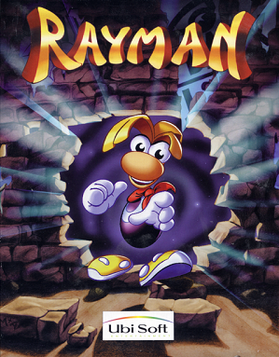
Rayman is a 1995 platform game developed by Ubi Pictures and published by Ubi Soft. It is the first installment in the Rayman franchise. The player controls Rayman, who must recapture Electoons and the Great Protoon after being told that Mr. Dark kidnapped them and uses its power to wreak havoc. Rayman gains new abilities throughout the game and the completion of each world requires defeating a boss with special abilities.
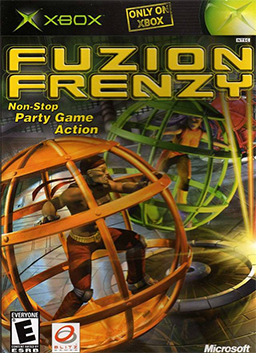
Fuzion Frenzy is a party video game developed by Blitz Games and published by Microsoft Game Studios for the Xbox. The game is a four-player party game featuring 45 different minigames. Developed as a launch title for the Xbox in the United States, Fuzion Frenzy was the first game mastered for the console and developed to fill the niche for a party game in its launch strategy. The game was released to mixed to average reviews, with critics praising the game's accessibility and visual presentation as an early showcase of the capabilities of the Xbox, whilst faulting the game's repetition and limited variety of minigames. Fuzion Frenzy was a moderate commercial success, although slow initial sales led Microsoft Game Studios to discontinue work by Blitz Games on a sequel for the Xbox. A sequel for the Xbox 360, Fuzion Frenzy 2, was later released in 2007 by Hudson Soft.

NewKidCo International Inc. was an American video game publisher of children's titles based on popular licensed characters, for Sony, Nintendo and Microsoft consoles. It went out of business in 2005.

The Settlers IV, released as The Settlers: Fourth Edition in North America, is a 2001 real-time strategy video game with city-building elements for Windows, iOS, webOS, bada, Symbian, and Android. Developed by Blue Byte and published by Ubi Soft, the Windows version was released in Germany in February 2001, in the United Kingdom in March, and in North America in August. Also in August, Blue Byte released an expansion, The Settlers IV Mission CD, featuring new single-player campaign missions, new maps for both single-player and multiplayer modes, a random map generator and map editor, gameplay improvements, and bug fixes. In December, they released a second expansion, The Settlers IV: The Trojans and the Elixir of Power, containing new single-player campaigns, additional single and multiplayer maps, improved graphics, and additional gameplay tweaks. In March 2002, The Settlers IV: Gold Edition was released, containing the original game and both expansions, plus fan-made maps for multiplayer mode, and two minigames. In November 2009, Gameloft ported the original game to iOS, under the title The Settlers. Although featuring updated graphics and utilising touch controls, the gameplay, game mechanics and storyline are identical to the original. In April 2010, The Settlers was released for webOS, specifically optimised for the Palm Pre. Gameloft later released HD versions for iPad, bada, Symbian and Android. In 2013, the Gold Edition was released on GOG.com. In 2018, the game was re-released as The Settlers IV: History Edition. it is the fourth game in The Settlers series, following The Settlers (1993), The Settlers II (1996) and The Settlers III (1998).

Tokyo Xtreme Racer is an arcade racing video game series created by Genki and inspired by street racing on the Shuto Expressway in Tokyo. Its first installment, Shutokō Battle '94: Drift King, was released in 1994 for the Super Famicom. In 2017, Genki released the latest installment of the series, Shutokou Battle Xtreme, for iOS and Android devices.

Finding Nemo is a 2003 action-adventure video game based on the film of the same name by Disney and Pixar. The GameCube, PlayStation 2 and Xbox versions were developed by Traveller's Tales, the Game Boy Advance version of the game was developed by Vicarious Visions, and its Microsoft Windows and Mac versions were developed by KnowWonder. All versions were published by THQ.

Tomb Raider: The Prophecy is a 2002 action-adventure video game developed by Ubi Soft Milan and published by Ubi Soft for the Game Boy Advance. A spin-off of the Tomb Raider series, it follows protagonist Lara Croft as she explores multiple temples in search of keys to a world-destroying power. Gameplay features exploration, combat and platforming displayed from a top-down isometric perspective.

Buzz! Junior: Robo Jam is a 2007 party video game for the Sony PlayStation 2, and is the second game in the Buzz! Junior series of games. Gameplay comprises multiple mini-games, each quite simple and straightforward to play using the four Buzz! controllers. It is primarily aimed at the family market but offers appealing entertainment to almost anyone of any age. Simple game play allows young children to participate while still being entertaining enough for older children and adults. The game is similar in concept to Jungle Party, with robot based mini-games in a space-themed environment. One of the main differences between Jungle Party and Robo Jam is the introduction of AI, allowing players to play against the computer. Unlike Jungle Party there is no solo game mode. A full game can be played with only one human player and three computer players.
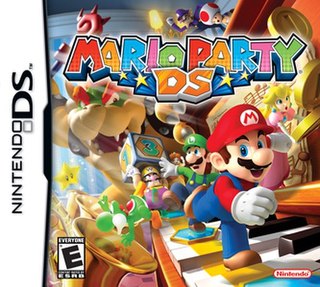
Mario Party DS is a 2007 party video game developed by Hudson Soft and published by Nintendo for the Nintendo DS. It is the second handheld game in the Mario Party series, as well as the last game in the series to be developed by Hudson Soft, as all subsequent titles have been developed by NDcube. The game was re-released on the Virtual Console for the Wii U in April 2016.

Island Xtreme Stunts is an action-adventure video game, and the sequel to Lego Island 2: The Brickster's Revenge, making it the third and final game in the Lego Island series, despite dropping the original Lego Island title and logo from the name. Like Lego Island 2, the game was developed by Silicon Dreams Studio. It was co-published by Electronic Arts and Lego Interactive, and was released in 2002, for the PlayStation 2 and Microsoft Windows, with a spin-off also released for Game Boy Advance.
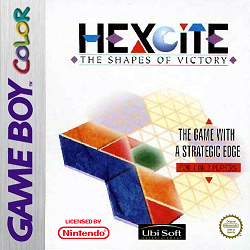
Hexcite: The Shapes of Victory is a 1998 Game Boy Color game developed by Gu Inc. in Japan and Landwarf in North America, and published by Ubi Soft. The game was a launch title for the Japanese release of the Game Boy Color.

Jim Henson's Muppets is a 2000 Game Boy Color platform game developed by Tarantula Studios and published by Take-Two Interactive, based upon the Muppets franchise of the same name.
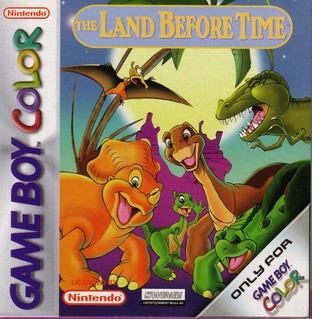
The Land Before Time is a 2001 Game Boy Color platform game developed by Eclipse Entertainment Ltd and published by Swing Entertainment Media in Europe and Conspiracy Entertainment in North America, based upon the 1988 film of the same name. A separate game featuring the same name was released for the Game Boy Advance by Full Fat in 2002.





















